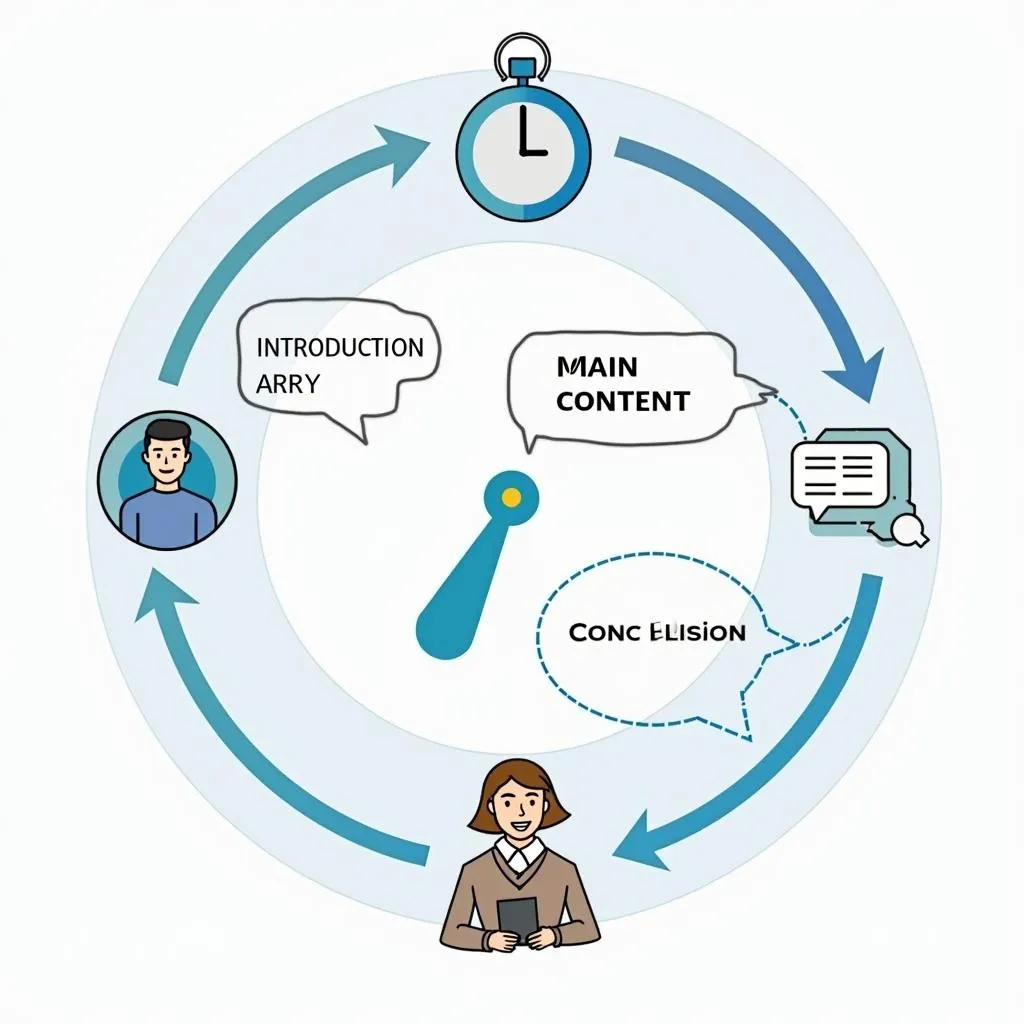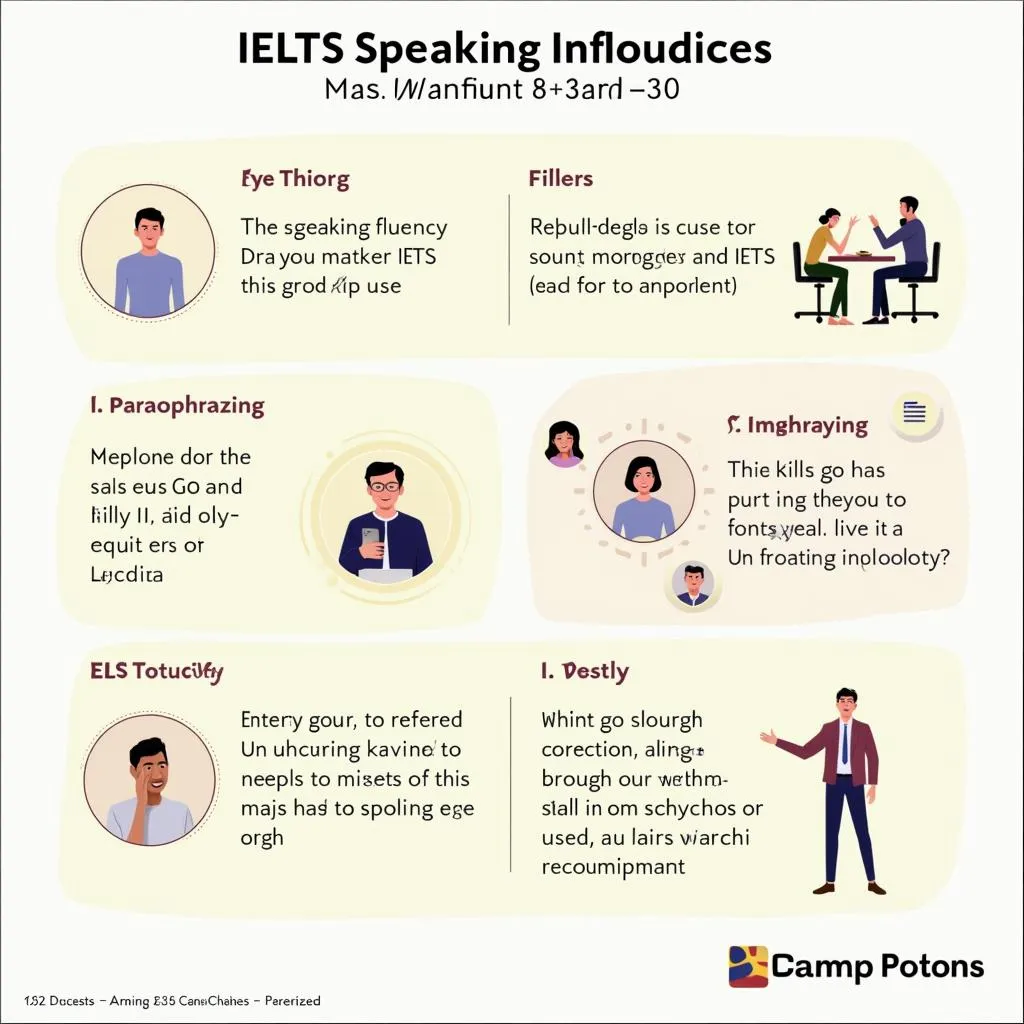Understanding the Importance of Storytelling in IELTS Speaking Part 2
IELTS Speaking Part 2, also known as the “long turn,” requires candidates to speak for 1-2 minutes on a given topic. Mastering the art of storytelling is crucial for success in this section. Effective storytelling not only helps you meet the time requirement but also engages the examiner and showcases your English language skills.
The Power of Narrative in IELTS Speaking
Storytelling is a powerful tool that allows you to:
- Demonstrate your vocabulary range
- Showcase your ability to use various tenses
- Maintain coherence and cohesion in your speech
- Engage the examiner with interesting content
 IELTS Speaking Part 2 Storytelling Techniques
IELTS Speaking Part 2 Storytelling Techniques
Essential Storytelling Tips for IELTS Speaking Part 2
1. Structure Your Story
A well-structured story is easier to follow and remember. Use this simple framework:
- Introduction: Set the scene and introduce the main elements
- Body: Develop the story with details and events
- Conclusion: Wrap up the story with a reflection or lesson learned
2. Use Descriptive Language
Bring your story to life with vivid descriptions. Incorporate:
- Adjectives to describe people, places, and things
- Adverbs to add depth to actions
- Sensory details to create a more immersive experience
For example, instead of saying “It was a nice day,” try “It was a gloriously sunny day with a gentle breeze carrying the sweet scent of blooming flowers.”
3. Employ a Range of Tenses
Demonstrate your grammatical prowess by using various tenses appropriately:
- Past Simple for completed actions
- Past Continuous for ongoing actions in the past
- Present Perfect for experiences or actions with current relevance
- Past Perfect for actions that occurred before another past action
Example: “I had just finished my exams (Past Perfect) when my friends invited me on a road trip. We were driving (Past Continuous) along the coast when we saw (Past Simple) the most beautiful sunset I’ve ever experienced (Present Perfect).”
4. Include Personal Emotions and Reactions
Adding your personal feelings and reactions makes the story more engaging and authentic:
- Use phrases like “I felt,” “I thought,” or “It seemed to me”
- Describe your emotional state at different points in the story
- Explain how the experience affected you
5. Practice Time Management
Ensure you can comfortably speak for the full 1-2 minutes:
- Time yourself during practice sessions
- Learn to expand on key points if you finish too quickly
- Practice concluding your story naturally if you’re running out of time
 IELTS Speaking Time Management Techniques
IELTS Speaking Time Management Techniques
6. Use Linking Words and Phrases
Enhance the flow of your story with appropriate connectors:
- Sequence words: “First,” “Then,” “After that,” “Finally”
- Cause and effect: “Because of this,” “As a result,” “Consequently”
- Contrast: “However,” “On the other hand,” “Despite this”
Example: “First, we arrived at the beach. Then, we set up our picnic. After that, we went for a swim. Finally, we watched the sunset.”
7. Prepare a Bank of Stories
Having a repertoire of stories ready can be immensely helpful:
- Prepare stories about personal experiences, memorable events, and important people in your life
- Practice adapting these stories to fit different prompts
- Ensure your stories cover various aspects of life (work, education, family, hobbies)
8. Use the STAR Method
For stories about achievements or challenges, use the STAR method:
- Situation: Set the context
- Task: Explain what was required of you
- Action: Describe what you did
- Result: Share the outcome and what you learned
This structured approach ensures you cover all essential elements of the story while demonstrating your problem-solving skills.
Common Pitfalls to Avoid
- Memorizing scripts: This can sound unnatural and limit your ability to adapt to the specific prompt.
- Ignoring the prompt: Ensure your story directly addresses all parts of the given topic.
- Speaking too fast: Maintain a steady, clear pace to ensure the examiner can follow your story.
- Using overly complex vocabulary: While it’s good to showcase your lexical range, ensure you’re using words correctly and naturally.
Next Steps for Improvement
To further enhance your storytelling skills for IELTS Speaking Part 2:
- Record yourself telling stories and listen back to identify areas for improvement.
- Practice with a study partner or language exchange partner who can provide feedback.
- Watch TED Talks or other presentations to observe effective storytelling techniques.
- Read short stories in English to expand your vocabulary and narrative structures.
- Take practice IELTS Speaking tests to familiarize yourself with the format and timing.
By incorporating these storytelling tips and practicing regularly, you’ll be well-prepared to excel in IELTS Speaking Part 2. Remember, the key is to engage your listener while demonstrating your English language skills naturally and confidently.


